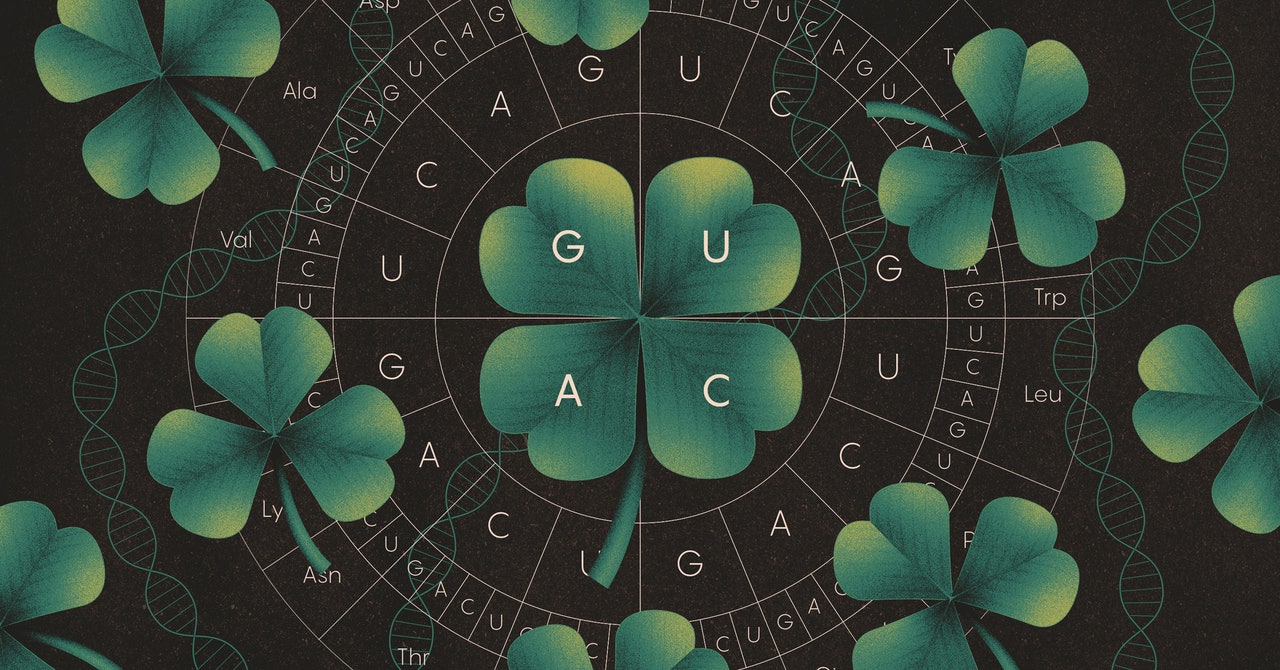
As wildly diverse as life on Earth is—whether it’s a jaguar hunting down a deer in the Amazon, an orchid vine spiraling around a tree in the Congo, primitive cells growing in boiling hot springs in Canada, or a stockbroker sipping coffee on Wall Street—at the genetic level, it all plays by the same rules. Four chemical letters, or nucleotide bases, spell out 64 three-letter “words” called codons, each of which stands for one of 20 amino acids. When amino acids are strung together in keeping with these encoded instructions, they form the proteins characteristic of each species. With only a few obscure exceptions, all genomes encode information identically.
Yet, in a new study published last month in eLife, a group of researchers at the Massachusetts Institute of Technology and Yale University showed that it’s possible to tweak one of these time-honored rules and create a more expansive, entirely new genetic code built around longer codon words. In principle, their discovery points to one of several ways of expanding the genetic code into a more versatile system that synthetic biologists could use to create cells with novel biochemistries that make proteins found nowhere in nature. But the work also showed that an extended genetic code is hampered by its own complexity, becoming less efficient and even surprisingly less capable in some ways—limitations that hint at why life may not have favored longer codons in the first place.
It’s uncertain what these findings mean for how life elsewhere in the universe could be encoded, but it does imply that our own genetic code evolved to be neither too complicated nor too restrictive, but just right—and then ruled life for billions of years thereafter as what Francis Crick called a “frozen accident.” Nature opted for this Goldilocks code, the authors say, because it was simple and sufficient for its purposes, not because other codes were unachievable.
For example, with four-letter (quadruplet) codons, there are 256 unique possibilities, not just 64, which might seem advantageous for life because it would open opportunities to encode vastly more than 20 amino acids and an astronomically more diverse array of proteins. Previous synthetic biology studies, and even some of those rare exceptions in nature, showed that it’s sometimes possible to augment the genetic code with a few quadruplet codons, but until now, no one has ever tackled creating an entirely quadruplet genetic system to see how it compares with the normal triplet-codon one.
“This was a study that asked that question quite genuinely,” said Erika Alden DeBenedictis, the lead author of the new paper, who was a doctoral student at MIT during the project and is currently a postdoc at the University of Washington.
Expanding on Nature
To test a quadruplet-codon genetic code, DeBenedictis and her colleagues had to modify some of life’s most fundamental biochemistry. When a cell makes proteins, snippets of its genetic information first get transcribed into molecules of messenger RNA (mRNA). The organelles called ribosomes then read the codons in these mRNAs and match them up with the complementary “anti-codons” in transfer RNA (tRNA) molecules, each of which carries a uniquely specified amino acid in its tail. The ribosomes link the amino acids into a growing chain that eventually folds into a functional protein. Once their job is complete and the protein is translated, the mRNAs get degraded for recycling and the spent tRNAs get reloaded with amino acids by synthetase enzymes.
The researchers tweaked the tRNAs in Escherichia coli bacteria to have quadruplet anti-codons. After subjecting the genes of the E. coli to various mutations, they tested whether the cells could successfully translate a quadruplet code, and if such a translation would cause toxic effects or fitness defects. They found that all of the modified tRNAs could bind to quadruplet codons, which showed that “there’s nothing biophysically wrong with doing translation with this larger codon size,” DeBenedictis said.
But they also found that the synthetases only recognized nine out of 20 of the quadruplet anticodons, so they couldn’t recharge the rest with new amino acids. Having nine amino acids that can be translated with a quadruplet codon to some degree is “both a lot and a little,” DeBenedictis said. “It’s a lot of amino acids for something that nature doesn’t ever need to work.” But it’s a little because the inability to translate 11 essential amino acids strictly limits the chemical vocabulary that life has to play with.


